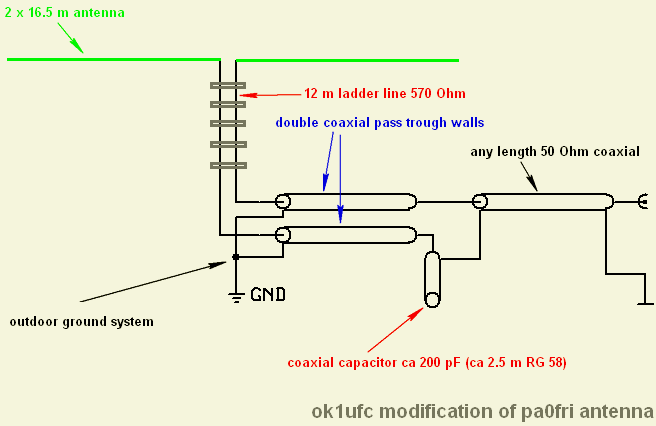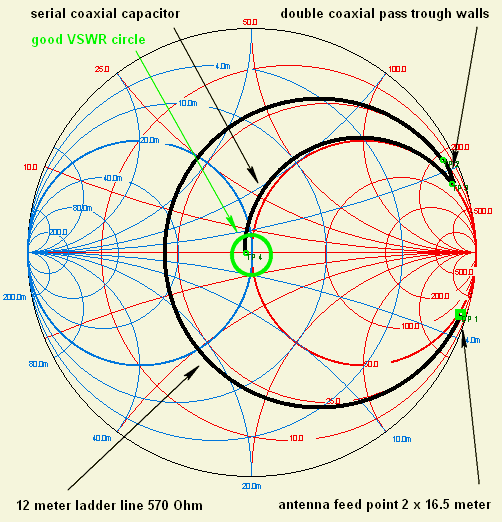![]() 28 dec 2014 OK1UFC tested the idea.
28 dec 2014 OK1UFC tested the idea.
This article is under construction!
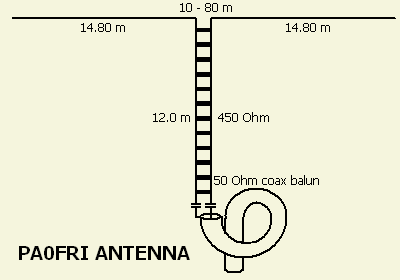
INTRODUCTION
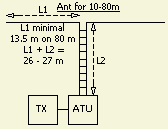
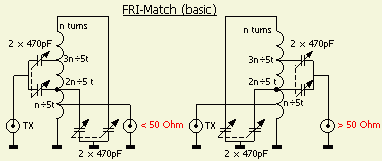
Since about 1970 I advise fellow hams to use this («fig) antenna system if they have problems to get their antenna tuned. At present some Czech amateurs call it "PA0FRI" antenna. During experiments with for example FD3 and FD4 types, I had noticed that there was a "Windom" point at a length of about 27 m. Assuming the specified sizes: dipole half + feeder length = 26 to 27 m, the impedance at the beginning of the ladderline offers a suited impedance for common antenna tuners. This also applies to current built-in antenna tuners. In the past I used my Fri-match to get the antenna in line.
The antenna system was created by constantly take it down, check with griddipper, SWR control, cut or lengthen and then set up again. At the time PC-controlled antenna simulation programs was not yet available!
ZS6BKW & G5RV

ZS6BKW has its antenna modeled with a program starting from the known G5RV antenna. You see that L1 + L2 is close to 26 to 27 m. If the antenna system is fed directly or with a coaxial balun, it is to long on 80 and the SWR is not very suitable. It could be improved by capacitances in the feedline. If this is installed between ladderline and coaxcable, the shortening at 80 m is largest and has not much influence on the highest bands. Such shortening capacitor I already have used in a FD4 system.
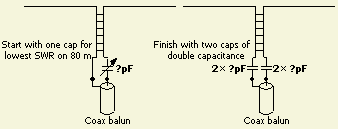
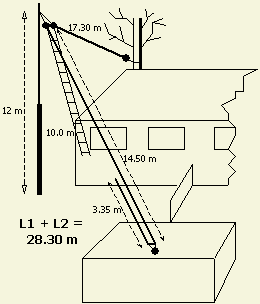
In order to determine the value of the capacitor, interrupt one leg of the feeder and insert an approximately 470 pF variable capacitor. With the transmitter on 80 m band tune capacitor for lowest SWR. Usually SWR decreased also on 40 m band.
If desired the capacitor can be tuned for a SWR compromise between the two bands. Then a fixed type of the same value can be replaced. It is believed that currents in the two conductors of the feedline are not equivalent, but the difference is minimal. However, it is better to double the value of the capacitor and intstalled one per feeder leg. Recently surfing on the Internet, I discovered that W5DXP also incorporates capacitors in the feeder, see: http://w5dxp.com/ZS6BKW75.htm
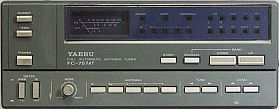 It is clear that the insertion of capacitors also can be worthwhile with G5RV and ZS6BKW antennas. The 450 Ohm ribbon line (fig») of my current antenna is extended in the shack so L1 + L2 = 28.30 m. Due to the capacitors SWR = 1 on 80 m and on 40 m SWR is decreased. With a YAESU FC-757AT tuner all 10 - 80 m bands can be adjusted for SWR<1.2. Except the 30 m band, it does not work or it is very difficult to match.
It is clear that the insertion of capacitors also can be worthwhile with G5RV and ZS6BKW antennas. The 450 Ohm ribbon line (fig») of my current antenna is extended in the shack so L1 + L2 = 28.30 m. Due to the capacitors SWR = 1 on 80 m and on 40 m SWR is decreased. With a YAESU FC-757AT tuner all 10 - 80 m bands can be adjusted for SWR<1.2. Except the 30 m band, it does not work or it is very difficult to match.
PA0FRI ANTENNA 10 - 80 m
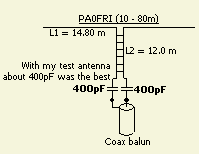
An experiment showed that the test antenna gave best result with two 400 pF capacitors. Actually it was 424 pF, but a suitable RF capacitor was here not (yet) in stock. For now, the length of the dipole is 2 × 14.80 m and the 450 ohm ribbon line is 12.0 m. It needs further experiments to discover if all values are optimal.
In general consider published antenna designs as advice and experiment locally to achieve a better result. In fact there are many factors that affect the final product: what is the antenna height, inverted V or not, which soil, wich surrounding buildings or in the open field, antenna wire of bare copper or insulated. In the latter you should consider a velocity factor of approximately V = 0.90. Many publications include G5RV and ZS6BKW do not mention this matter. Note: what works in my area may not suited for you to achieve the same result.
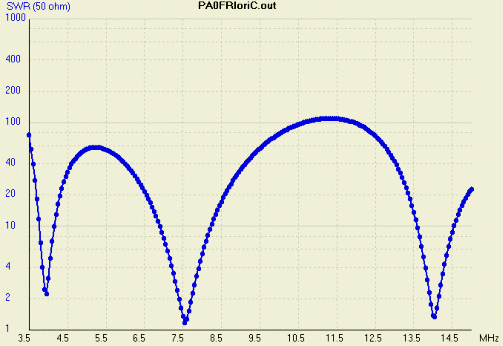
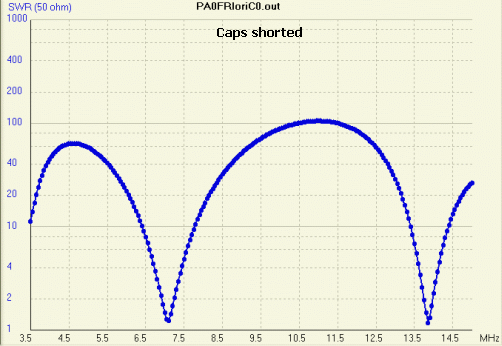
These graphs indeed shows that 400 pF is not the correct value to improve the SWR within our 80 m band. The resonance point can be shifted by changing 4 MHz to 3650 MHz for example. Incidentally, it is better to feed the antenna system with a symmetrical antenna tuner.
OK1UFC
OK1UFC tested this idea and he wrote: "Your antenna gives good results on 3.576 MHz".
2. Feed point h = 10 meter.
3. Ladder line 570 Ohm L = 12 meter.
4. Pass trough the wall is realised with two coaxials (2 × 0.5 meter), the pass trough the wall reduces the required length of ladder line.
5. Only 1 serial capacitor was used made with coax RG 58, L = 2530 mm, C = ca 200 pF.
